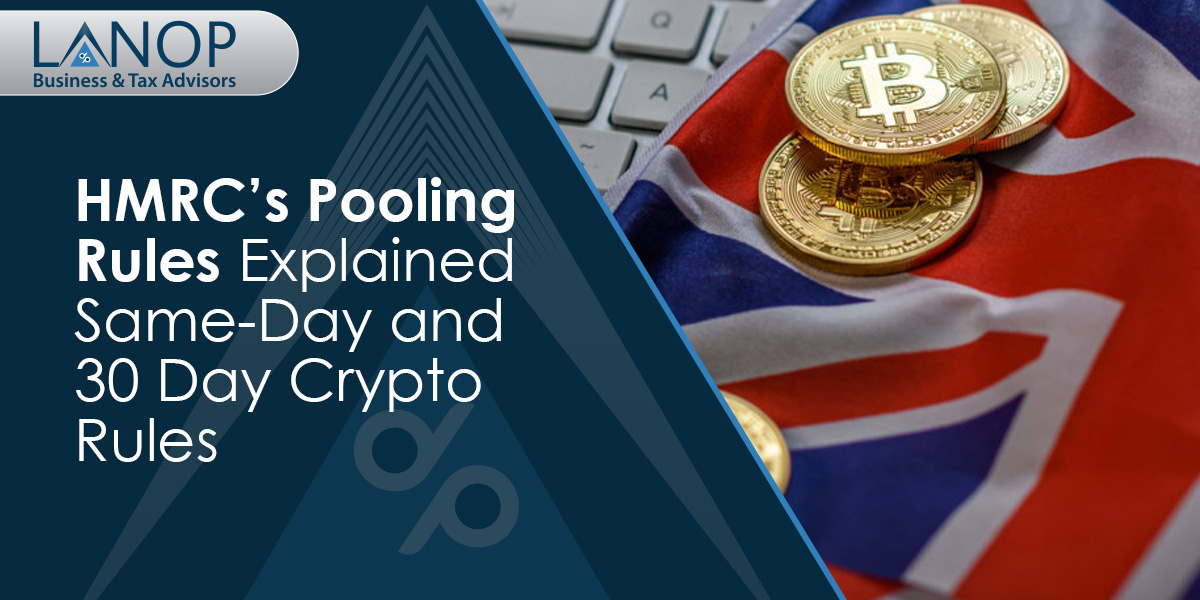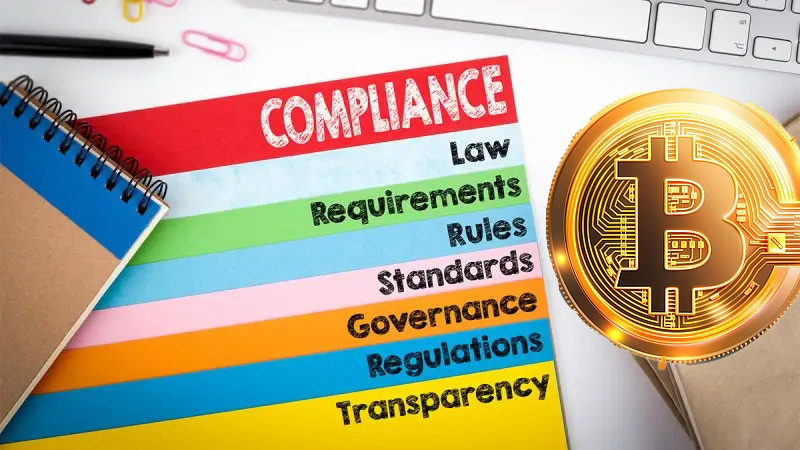
The Evolving Landscape of UK Cryptocurrency Tax
The market for digital assets in the UK is growing quickly. It is a developing part of the financial world. The UK cryptocurrency market totalled about $341.45 million in 2024. Experts forecast it will increase around 10.85% each year, potentially exceeding $1 billion by 2035. More money moving around in investments and trading has caught the notice of tax agencies. Lots of people think digital money exists apart from usual banking; however, British tax rules state that crypto assets face taxes. For a wider context on how these rules fit together, you can read the complete guide to UK crypto taxation rules and compliance.
In the UK, tax authorities view cryptocurrencies as possessions, not as actual money. They consider crypto a type of asset, like property, when deciding how to tax it. This basic grouping forms the foundation of the whole tax system. It means regular tax laws for possessions, like stocks, apply to cryptocurrency. Because of this, the money you make from buying, selling, or using cryptocurrencies usually falls under taxes for profits from assets, or taxes for money you earn.
Many investors find this two-part setup really confusing. The tax you pay relies on what you do with the item, not the item itself. You pay a tax on profits from selling cryptocurrencies. You can get rid of it by trading for regular money, exchanging it for different digital coins, or using it to buy things. Switching Ether to Bitcoin creates a tax situation, even if you don’t use regular money. Instead, you pay income tax on money you make from things like creating crypto, holding crypto to earn more, or getting paid in crypto for work you do. You receive taxable income from a cryptocurrency airdrop if you do something to earn it, like promote a project or write code.
A random gift is different.
UK crypto investors benefit from a yearly tax break. For the tax year 2024 to 2025, you can earn £3,000 in capital gains before you pay tax. This is less than the £6,000 you could earn last year, or the £12,300 from 2022 to 2023. The shrinking tax-free amount suggests taxes will become stricter. This likely means a greater number of people with even small investments will go over the limit, needing to complete a tax return for the first time. You can earn £12,570 before you start paying Income Tax. These rules change, so it’s vital to keep up to date, carefully document everything, follow the regulations, then you won’t face fines.
The Mandatory Hierarchy of HMRC’s Pooling Rules
The Three Golden Rules of Cryptocurrency Tax Calculation
To accurately calculate Capital Gains Tax on cryptocurrency disposals, HMRC mandates a strict, three-step matching process. This hierarchy is not a set of optional methods but a mandatory order that investors must follow to determine the correct cost basis for their disposals. The rules are designed to prevent tax manipulation and ensure a consistent, auditable method for all taxpayers. Failing to follow this precise order can result in incorrect tax calculations, underpayment of tax, and subsequent penalties from HMRC.
The following table provides an overview of the mandatory matching rules, outlining their purpose and function within the HMRC framework.
Because this hierarchy is rigid and technical, many active traders prefer to have crypto tax specialists who work with HMRC pooling rules daily review their transaction history before they finalize their return.
| Rule Name | When It Applies | What It Does | Purpose |
|---|---|---|---|
| Same-Day Rule | When identical crypto is bought and sold on the same calendar day | Matches disposals with acquisitions made on the same day, simplifying high-frequency trading calculations. | Prevents tax manipulation by consolidating same-day transactions. |
| 30-Day Rule (“Bed & Breakfasting”) | When identical crypto is sold and then repurchased within the following 30 days | Matches disposals with new acquisitions in the 30-day window on a FIFO basis. | Prevents “wash sales” where investors sell at a loss and instantly rebuy to reduce tax. |
| Section 104 Rule (Pooling) | When a disposal cannot be matched under the Same-Day or 30-Day Rule | Groups all remaining assets into a single pool using a running average cost basis. | Provides a consistent long-term method for calculating gains and losses. |
A Swift Match: Understanding the Same-Day Rule
The same-day rule is the first thing we check when finding a match. It’s the quickest way to see if items relate to each other. The rule states that if you buy, then sell the same cryptocurrency on the same day, you should pair those transactions together whenever you can. This process groups all purchases of the same item on one day as a single buy. It does the same for all sales, making it easier to figure out costs for people who trade often with lots of deals each day.
Let’s say someone purchases 2 Bitcoins at £60,000 apiece, then later sells 1 Bitcoin for £65,000. To figure out the profit, we look at the price of the Bitcoin they sold on the day they bought it. You would make a £5,000 profit from the afternoon sale because the cost comes straight from the morning buy. Any Bitcoin left over gets checked against the next rule in the list. This rule helps quickly process frequent trades, making sure profits get reported correctly. People often make mistakes by not following this rule. These errors create a chance of being checked by tax authorities because the rule is essential to how the tax system works.
A day trader approached Lanop Business and Tax Advisors after HMRC queried his frequent same-day Bitcoin trades. By applying the correct pooling hierarchy and recalculating his base costs, we reduced his reported gains by £7,500, ensuring compliance and peace of mind.
The Strategic 30-Day “Bed and Breakfasting” Rule
A 30-day waiting period, sometimes called the “bed then breakfast” rule, is the next step when figuring out who must buy or sell shares first. It mainly stops people from lowering their taxes by selling something for less than its worth, then quickly buying it again to keep their investments the same. This tactic is called a wash sale. This looks like a fake sale because the investor keeps their ownership of the item.
If you sell a cryptocurrency, then buy the same one within 30 days, the sale connects with the new purchase. This stops someone who invests money from reporting a fake decrease in value. “Bed breakfasting” comes from how stocks were traditionally traded, a practice recognised for a long time in British tax rules. This shows the tax authority uses existing financial regulations for things like cryptocurrency. Let’s say someone loses £2,000 selling a digital coin on day ten, then purchases it again on day fifteen. The thirty-day regulation means they cannot claim the entire loss on their taxes right away. This program shows how even easy ways to save on taxes can cause trouble if someone without specific knowledge manages them.
Section 104 Pool: Your Cryptocurrency Base Cost
The Section 104 rule is the last, complete method for finding matches. It covers any sales that weren’t matched by the same-day or 30-day rules. People frequently call this method the pooling method or the average cost method. Investors must combine all further purchases of a cryptocurrency into one group, calculating an average price over time.
Figure out the maximum cost permitted by this rule. Total the expenses for every item within the collection, then split that sum by the number of tokens you possess. Let’s say you purchased 2 Bitcoins for £40,000, then you acquired 1 more Bitcoin for £30,000. Your total holdings become 3 Bitcoin, with an overall purchase price of £70,000. Each Bitcoin costs around £23,333.33, on average. You reduce the amount available when you sell something. The system then adjusts the remaining balance. The average shifts as new items arrive or leave. Each different cryptocurrency, like Bitcoin or Ethereum, needs its own distinct collection of funds. Each token is unique; it doesn’t get combined with others.
It’s tough for investors to keep up with this constantly changing collection of assets, especially if they trade often or own a lot of different things. It’s really hard to follow these rules perfectly, showing how tough it is to be sure everything is correct unless you use specific programs or get help from experts.
Prefer watching instead?
Here’s a video summary for you


The Full Tax Picture: Beyond the Pooling Rules
How HMRC Calculates Crypto CGT: A Step-by-Step Guide
The calculation of Capital Gains Tax on crypto disposals follows a straightforward formula: the capital gain or loss is the disposal proceeds minus the allowable costs. The disposal proceeds are the value of the crypto asset in GBP at the time of the disposal. At the same time, permissible costs include the original price paid for the crypto plus any associated transaction fees. This calculation forms the basis for determining whether a tax liability exists.
A crucial and often overlooked detail is that HMRC’s CGT rates for crypto disposals changed in the middle of the 2024-2025 tax year. For any disposals made before October 30, 2024, the rates were 10% for basic rate taxpayers and 20% for higher rate taxpayers. However, for disposals made on or after October 30, 2024, these rates increased to 18% and 24% respectively. The fact that these rates changed mid-year means that an investor could have transactions spanning both periods and must be aware of which rate to apply. A simple error in calculation could lead to an underpayment of tax and subsequent penalties.
The following table provides a comprehensive overview of the rates and allowances for the 2024-2025 tax year.
Tax Type
Taxable Income/Gains
Tax Rates
Annual Exemption/Allowance
| Tax Type | What Gets Taxed | Tax Rates | Annual Allowance |
|---|---|---|---|
| Capital Gains Tax | Total gains over the annual CGT exemption |
Pre-Oct 30, 2024: 10% (Basic), 20% (Higher/Add.) Post-Oct 30, 2024: 18% (Basic), 24% (Higher/Add.) |
£3,000 |
| Income Tax | Total income above the personal allowance | 20% (Basic), 40% (Higher), 45% (Additional) | £12,570 |
The complexity of these rules creates a pressing need for careful tax work, along with accurate filing. To navigate this complexity effectively, seeking professional crypto accounting advice is essential.
Unlocking Tax-Efficient Strategies with Lanop
Smart tax planning helps you keep more money, lowers what you owe in taxes. People often lower their taxes by selling crypto that has lost value. They use these losses to balance out profits, ultimately decreasing how much income they pay taxes on. This plan appears straightforward, yet it faces a strict thirty-day restriction. A person who invests money cannot sell something at a loss, then quickly repurchase it within 30 days to keep their investment, because the regulation stops them from claiming that loss on their taxes. It shows that straightforward plans can cause trouble if you don’t know the rules well.
You can also lower taxes by giving crypto that has increased in value to a charity, or by giving it to your husband, wife, or partner. Giving gifts to your husband or wife lets you move possessions without paying taxes. This is a good way for a couple to use each person’s yearly capital gains tax allowance, especially if one person pays less tax than the other. These methods, used with careful attention to tax regulations, offer real advantages. If something goes wrong with these details, an investor might face an audit. Discover how our expert tax advisory team can help your business thrive.
Navigating the Complexities of a Modern Crypto Portfolio
Staking, Mining, and DeFi: A Tax Labyrinth
New ways to earn money with cryptocurrency, like locking up coins, providing funds for trading, or earning rewards, create challenges for figuring out taxes. It’s harder to figure out taxes for these things than for straightforward purchases. Tax rules depend on what the deal actually is, so authorities usually decide how to handle each situation individually. HMRC’s advice is still changing, so investors face uncertainty.
Typically, you need to pay taxes on rewards from mining or staking. The tax applies to the value of those rewards in British pounds when you get them. You have to pay taxes on airdrops if you get them for work or as part of a deal. You likely won’t pay taxes when you first get free tokens. However, when you sell those tokens, you will owe capital gains tax on their full worth.
Because the tax authority makes decisions based on individual situations with complicated crypto dealings, tax programs sometimes get transactions wrong. This shows a major problem with relying only on computers. They lack the careful thinking a person needs when dealing with difficult issues. Someone investing may sort a payment themselves to lower taxes, a risky practice that does not follow the rules. This could cause a tax review.
Staying Ahead: Compliance and the Importance of Records
The tax authority does more than offer advice. The tax agency works with cryptocurrency companies to get information. Also, it employs new technologies to keep track of crypto transactions. Starting in August 2024, the tax authority sent letters to people they believe did not report or pay taxes on profits from selling cryptocurrency. The tax office uses information they already have to write these letters, so they aren’t guesses. Because blockchain records are open for everyone to see, the tax agency will check for issues with tax payments. Now, regulators are really cracking down. Investors who don’t follow the rules will likely be discovered, so they need to get their taxes right quickly.
This creates a pressing need for careful tax work, along with accurate filing. The tax authority actively looks for these errors, then takes action. If you receive an enquiry, our team can provide expert HMRC Tax Investigation Services. Investors need to keep careful notes of every cryptocurrency trade to follow the rules. Keep track of when you buy or sell crypto, how much each transaction costs, what kind of crypto it was, why you made the trade, also the digital wallet addresses involved. You report profits, losses on a tax return, using the SA108 form. Report crypto income on the SA100 form. For step-by-step guidance on reporting, view our detailed UK Self-Assessment guide. You must submit paper tax forms by October 31, 2025. Electronic tax returns are due by January 31, 2026. Keeping good records is the most important first step to fulfil these requirements.

Lanop: Your Ultimate Crypto Tax Solution
Our Motto: Your Financial Future, Simplified
Lanop helps people, companies manage taxes easily. We want to make dealing with taxes straightforward. Handling your money should feel easy, not cause worry. We make the UK tax system easier to understand. Our team uses experience, focusing on people, so clients can manage their taxes feeling sure, clear about what they need to do.
What sets Lanop apart? Putting people first
Lanop is different from other tax software. Other companies use software to handle your taxes, but we have real tax experts in uk who take care of everything for you. Programs frequently struggle with tricky situations, like changing rules for digital money or deals where the taxes aren’t clear. We use people, not just computers, to make smart decisions, fix mistakes, and offer helpful guidance. Software can’t do all of that on its own. We really focus on people, so we look at every part of your money situation carefully, giving each detail the attention it needs.
Our Services: From Foundation to Filings
Lanop handles all your crypto taxes. We provide complete service, from start to finish, so you don’t have to worry. We start with a no-cost meeting to learn about your money aims, your work with digital currencies, and what you want to achieve. We team up with you to collect, organise every piece of your financial information, no matter where it comes from, so nothing gets overlooked.
We handle all the tricky math, correctly using tax laws from HMRC, along with other tax standards, for your investments. We work to lower your taxes, using every legal option, like credits or applying past losses, so you keep more of your money. We take care of all your tax filing, sending the right forms to the tax authority for you. This gives you confidence knowing your taxes are correctly managed.For detailed information on Crypto tax rules, here is a complete guide for Crypto Tax Rules 2025.
Conclusion: The Smart Path to Crypto Tax Confidence
UK rules for taxing cryptocurrency are tricky; they change often, officials are paying more attention to them, and they are also getting stricter. HMRC has specific tax rules for cryptocurrency, especially rules about how you handle different crypto assets. These rules, like the same-day rule, the 30-day rule, or using a Section 104 pool, exist to make sure people pay the correct taxes, avoiding any attempts to dodge them. Incorrect profit figures, or not telling the tax authority about sales, create big money problems. The tax authority actively looks for these errors, then takes action.
Lots of people find it very hard to stay on the right side of the rules with so many crypto deals happening, especially with newer things like DeFi or staking. Keeping track by hand just isn’t practical. You’ll succeed here by learning the guidelines, keeping excellent records. To really feel secure, nothing beats the careful advice a professional offers.
For detailed information on Crypto tax rules, here is a complete guide for Crypto Tax Rules 2025.
FAQs
How does the UK tax authority treat multiple cryptocurrency transactions?
Tax rules for cryptocurrency require investors to use a specific, three-step method to figure out profits or losses when they sell the same type of digital asset. This tool is a key part of how the tax office handles crypto taxes. It stops people from falsely changing how much tax they owe. To figure out your crypto taxes for the tax office, you need to check transactions done on the same day, then look at those from the past 30 days, before using a specific tax rule. This process makes reporting your crypto profits clear, straightforward, and uniformly applied.
What does it mean to buy a stock, then sell it thirty days later for a small profit?
The tax office has a rule for crypto, which requires you to calculate taxes within 30 days. People sometimes call this a “wash sale” technique; it’s the next thing you need to handle when figuring out your taxes. It mainly stops people from doing wash sales. This happens when someone sells something for less than they paid, takes a tax break, then quickly buys it again. People do not see this as a proper way to get rid of something. If you sell cryptocurrency, then buy the exact same type within 30 days, the tax office treats it as one transaction. This stops people from falsely reporting a loss on their taxes.
What is the Section 104 pool?
The Section 104 rule is the last way to figure out taxes on crypto you sell, it works when the same-day or 30-day rules don’t fit your situation. This method, frequently known as the average cost method, asks investors to combine all their remaining purchases of the same cryptocurrency into one group. You figure the cost basis by averaging it over time, which gives you a clear way to see profits or losses from investments you hold for a while. This idea is basic to the topic.
Will Lanop figure out how to group things for me?
Okay, definitely. Lanop helps with crypto taxes. It manages tricky HMRC rules for pooled investments as part of a complete, hassle-free service. Lanop offers skilled tax experts, not just computer programs, to help with tricky DeFi situations or complicated money movements. They carefully manage everything, collecting your payment information, then correctly use all required rules for same-day, 30-day, or Section 104 pooling. This helps you follow the rules so that you can feel secure.
Aurangzaib Chawla is a UK-based tax advisor and Managing Partner at Lanop Business & Tax Advisors. With nearly two decades of experience, he supports individuals, landlords, and SMEs with proactive tax planning and compliance. Known for simplifying complex tax legislation, Zaib helps clients minimise liabilities while building sustainable, tax-efficient strategies for long-term success.
let’s talk through your options, no jargon, no pressure.



